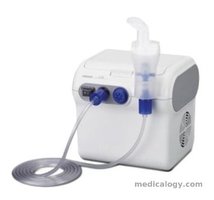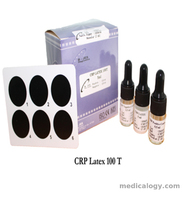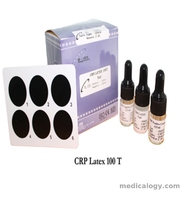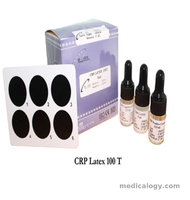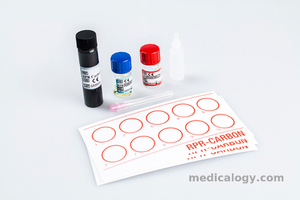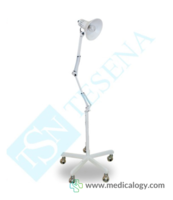- info@medicalogy.com
- 0877 7555 4616
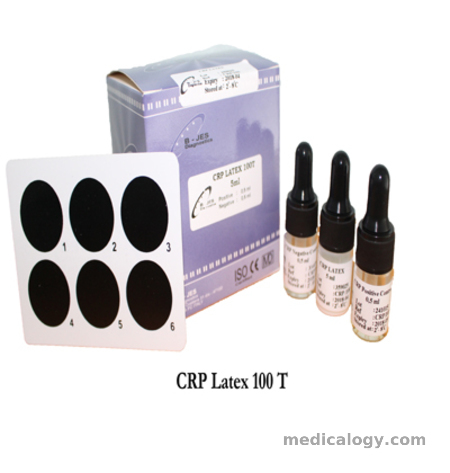
Dijamin original dan bergaransi
COMPOSITION
A. Reagent: Glycine buffer 0.1 mol/L, sodium azide 0.95 g/L, pH 8.6.
B. Reagent: Suspension of latex particles coated with anti-human CRP antibodies, sodium
azide 0.95 g/L.
S. CRP Standard: Human serum. C-reactive protein concentration is stated on the vial label. Concentration value is traceable to the Standard Reference Material BCR 470 (Institute for Reference Materials and Measurements, IRMM). Human serum used in the preparation of the standard has been tested and found to be negative for
the presence of antibodies anti-HIV and anti-HCV, as well as for HBs antigen. However, the standard should be handled cautiously as potentially infectious.
STORAGE
Store at 2-8ºC.
Reagents and Standard are stable until the expiry date shown on the label when stored tightly closed and if contaminations are prevented during their use. Indications of deterioration:
− Reagents: absorbance of the blank over 0.900 at 540 nm.
− Standard: Presence of moisture.
Harga Reagen CRP Slide :
Produk yang dibeli bersamaan:
Deskripsi Reagen CRP Slide
PRINCIPLE OF THE METHOD
Serum C-reactive protein (CRP) causes agglutination of the latex particles coated with antihuman C-reactive protein. The agglutination of the latex particles is proportional to the CRP concentration and can be measured by turbidimetry1-4.
COMPOSITION
A. Reagent: Glycine buffer 0.1 mol/L, sodium azide 0.95 g/L, pH 8.6.
B. Reagent: Suspension of latex particles coated with anti-human CRP antibodies, sodium
azide 0.95 g/L.
S. CRP Standard: Human serum. C-reactive protein concentration is stated on the vial label. Concentration value is traceable to the Standard Reference Material BCR 470 (Institute for Reference Materials and Measurements, IRMM). Human serum used in the preparation of the standard has been tested and found to be negative for
the presence of antibodies anti-HIV and anti-HCV, as well as for HBs antigen. However, the standard should be handled cautiously as potentially infectious.
STORAGE
Store at 2-8ºC.
Reagents and Standard are stable until the expiry date shown on the label when stored tightly closed and if contaminations are prevented during their use. Indications of deterioration:
− Reagents: absorbance of the blank over 0.900 at 540 nm.
− Standard: Presence of moisture.
REAGENT PREPARATION
Working Reagent: Pour the contents of a 1 part of Reagent II vial into a 4 part of Reagent I bottle (Note 1). Mix thoroughly. Stable for 20 days at 2-8ºC. Smaller Working Reagent volumes can be prepared by mixing: 1 mL of Reagent B + 4 mL of Reagent A. Shake the Reagent B vial before pipetting. CRP Standard (S): Reconstitute with 1.0 mL of distilled water. Stable for 1 month at 2-8ºC.
Review Reagen CRP Slide
Belum ada ulasan.

